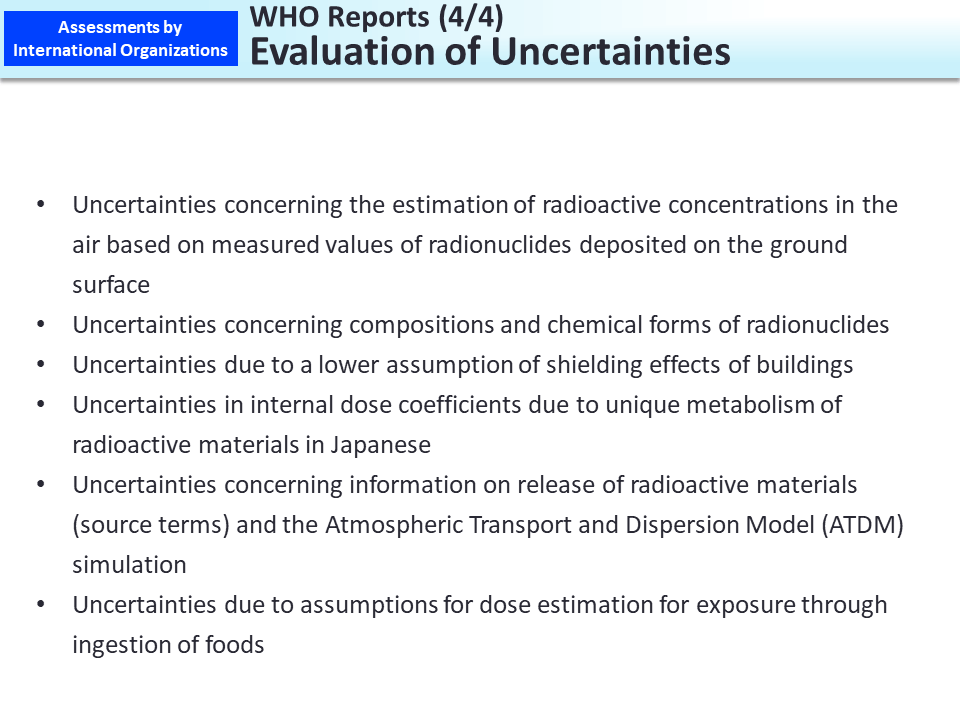WHO Reports (4/4)
Evaluation of Uncertainties
The WHO mainly explains as follows regarding the uncertainties in the results of effective dose estimation.
- Estimating radioactivity concentrations in the air based on the amounts deposited on the ground surface involves uncertainties. For example, the chemical form of iodine influences the deposition rates, which causes a significant uncertainty in the estimation of exposure doses through inhalation. Additionally, compositions of radionuclides, such as percentages of I-131 and Cs-137, differ by area and this is also a source of uncertainties.
- Dose assessment was conducted assuming wooden houses, whose shielding effects are weaker than those of buildings made of concrete. This is one of the sources of uncertainties that might result in overestimation.
- When estimating internal exposure, dose coefficients (doses due to the intake of 1 Bq in the body) specified by the International Commission on Radiological Protection (ICRP) were used. However, Japanese people take in a lot of marine products and are said to have relatively larger amounts of stable iodine in the body. If this is the case, even if they take in radioactive iodine temporarily, the amount of radioactive iodine entering the thyroid would be smaller. However, such possibility was not taken into consideration and this is also one of the sources of uncertainties.
- Internal exposure through the intake of foods was estimated under assumptions that might lead to overestimation, such as that people had eaten only foods produced in Fukushima Prefecture and neighboring prefectures, which also causes uncertainties.
[Relevant parts in the reports]
- WHO Report on preliminary dose estimation (4.7 "Main sources of uncertainty and limitations" on pages 60 to 62, and 2.6.1 "Ingestion doses inside Japan" on pages 31 to 33)
- Included in this reference material on March 31, 2015

